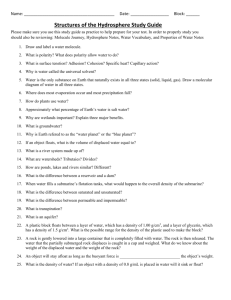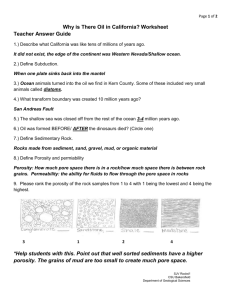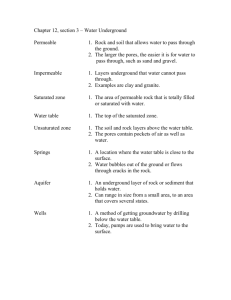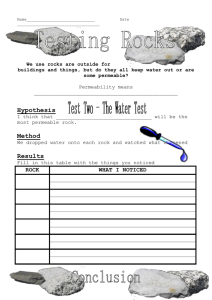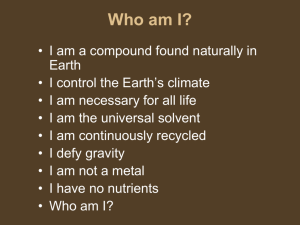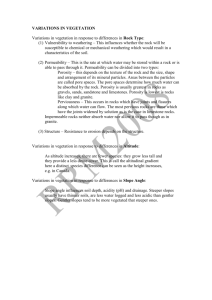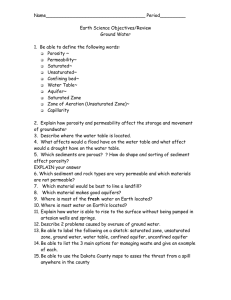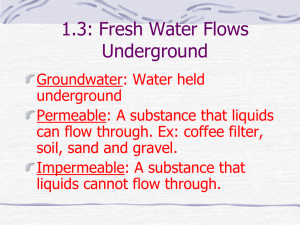Hydrologic Cycle - introduced by Seneca, 54 B
advertisement
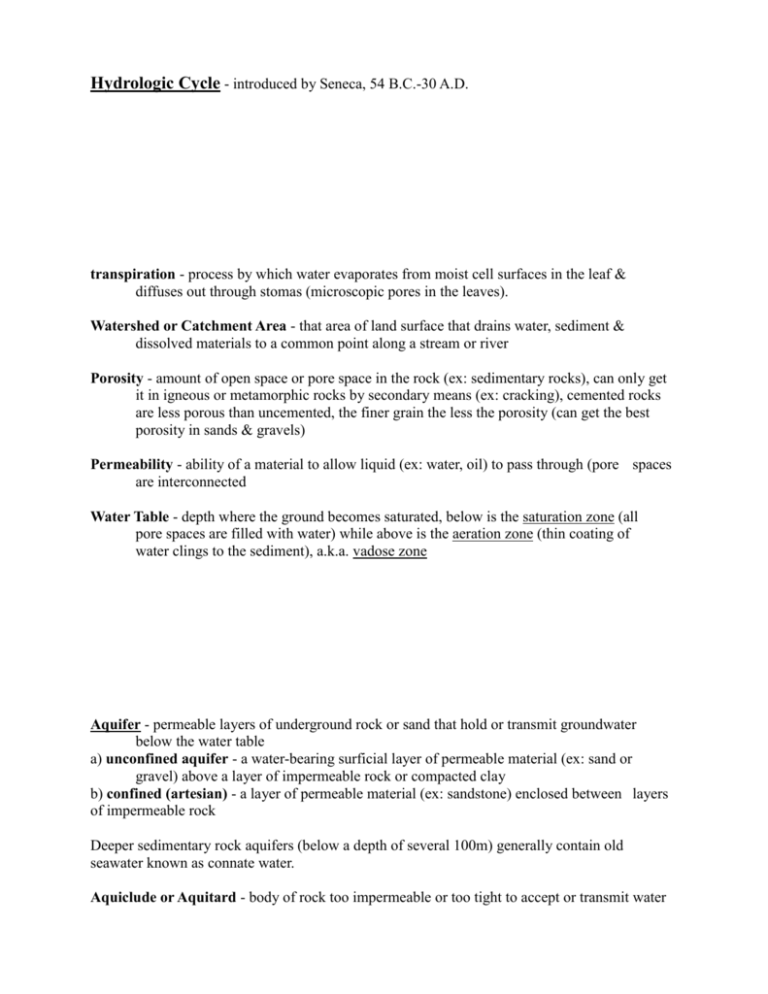
Hydrologic Cycle - introduced by Seneca, 54 B.C.-30 A.D. transpiration - process by which water evaporates from moist cell surfaces in the leaf & diffuses out through stomas (microscopic pores in the leaves). Watershed or Catchment Area - that area of land surface that drains water, sediment & dissolved materials to a common point along a stream or river Porosity - amount of open space or pore space in the rock (ex: sedimentary rocks), can only get it in igneous or metamorphic rocks by secondary means (ex: cracking), cemented rocks are less porous than uncemented, the finer grain the less the porosity (can get the best porosity in sands & gravels) Permeability - ability of a material to allow liquid (ex: water, oil) to pass through (pore spaces are interconnected Water Table - depth where the ground becomes saturated, below is the saturation zone (all pore spaces are filled with water) while above is the aeration zone (thin coating of water clings to the sediment), a.k.a. vadose zone Aquifer - permeable layers of underground rock or sand that hold or transmit groundwater below the water table a) unconfined aquifer - a water-bearing surficial layer of permeable material (ex: sand or gravel) above a layer of impermeable rock or compacted clay b) confined (artesian) - a layer of permeable material (ex: sandstone) enclosed between layers of impermeable rock Deeper sedimentary rock aquifers (below a depth of several 100m) generally contain old seawater known as connate water. Aquiclude or Aquitard - body of rock too impermeable or too tight to accept or transmit water
